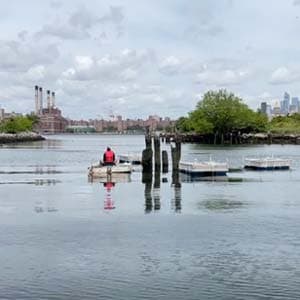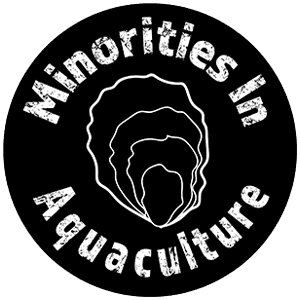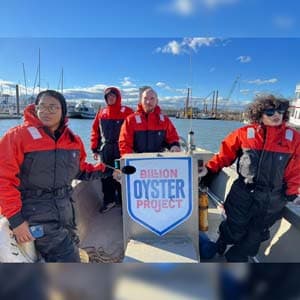The OysterCraft Project
Welcome to the digital oyster reef!
This reef is composed of oysters (“The Dorises”) that were minted as NFTs on Feral File. The purpose of the reef is to connect people to real-world oyster projects in the spirit of experimental philanthropy, raising money for conservation and awareness initiatives through these sales.
Why oysters? According to NOAA (the National Oceanographic and Atmospheric Administration), “Oysters are a crucial component of global ocean health. These animals filter and clean the surrounding water and provide habitat, food, and jobs. In some places, oyster reefs can serve as barriers to storms and tides, preventing erosion and protecting productive estuary waters.” In this time of extreme climate chaos, supporting oyster reefs (not just because they’re delicious) is more important than ever.
Mint an oyster / Become part of the reef / Vote on donating to real-world oyster projects.
Please check out the participating initiatives below.
About “The Dorises - Oystercraft from silicon to saltwater”
Collectors (and spectators) are encouraged to visit the exhibition “Chain Reaction,” curated by Christiane Paul, Curator of Digital Art, Whitney Museum of American Art. There you will find Ira Greenberg and Marina Zurkow’s “The Dorises - Oystercraft from silicon to saltwater.”
While the outsides of the oyster shells are similar, each of the 100 oysters in the edition is varied. The insides are structured through custom generative software according to four categories, each based on an aspect of oyster physiology, purpose, and lore: Oyster Engineer (plumbing, cleaning, sifting, filtering machinery); Oyster Artist (creating beauty, wonder, inspiration, well-being); Oyster Sex Symbol (aphrodisiacal and sex-changing); and Oyster Kin (with other animals, including humans who “farm” and eat them). The artists used AI to generate the oyster elements and backgrounds; embedded across the four categories are fifteen unique surprises, with varying degrees of rarity.
Along with their oyster, collectors receive a unique password (in their contract) that gives them access to vote here at the OysterCraftReef, where they see their NFT come together with the other collected oysters to form a visual reef. As a collective structure, the oyster reef supports real-world projects such as oyster reef cultivation, conservation, and awareness work. After no more than 90 days after the birth of the reef, collectors will vote on distributing the funds generated through their purchase to one of three diverse groups supporting oyster reef conservation.
The project title, “The Dorises,” alludes to Doris, a Greek goddess of the briny waters and sea. Doris was one of the 3000 Oceanids, daughters of the Titans Oceanus and Tethys, and represents the fertility of the ocean. Her name connects the two words Dôron, meaning “gift” or “abundance,” and Zôros, meaning the “pure” and “unmixed,” often used to describe fresh water.
“The Dorises - Oystercraft from silicon to saltwater” is part of “Chain Reaction” curated by Christiane Paul.
Exhibition at Feral File opens March 7, 2023
14:00 UTC+0 (9am New York, 11am São Paulo, 3pm Berlin, 10pm Shanghai)
Collecting begins one hour later
Donate / Mint an Oyster
Join the digital reef! By minting an oyster, you will be participating in an experiment in philanthropy. Net proceeds from the sale of oysters in “The Dorises - Oystercraft from silicon to saltwater” project will go to one of three deserving oyster projects that focus on oyster conservation, education and job training, and cultural awareness.
Support this Fundraiser
Already own an oyster?
The deadline to vote is June 5, 2023 14:00 UTC+0 (9am New York, 11am São Paulo, 3pm Berlin, 10pm Shanghai).
The Voting System
One oyster, one vote!
Majority votes will award the net proceeds from “The Dorises - Oystercraft from silicon to saltwater” to one real-world oyster project. You will be able to vote on your preferred initiative when you locate your oyster in the reef and click on it. At the end of 90 days from the reef’s birth on March 7 2023, the voting period will end and funds will be donated to the top-ranking initiative.
Participating Initiatives
These three projects represent a range of approaches to reef conservation, and in all instances, connect human and oyster lives in order to create dynamic, equitable ecosystems.

Tending Ostreidae: Serenades for Settling
Tending Ostreidae: Serenades for Settling (TOSS) is an immersive, multimedia operetta created from the science and folklore surrounding the heroic oyster - its role as a vital organism of our ecosystems and its myth as a human aphrodisiac. Based on new studies investigating oysters’ need to “listen” in order to thrive, which points to hazardous interference caused by human-produced noise, (TOSS) advocates for sonically safe harbors for oyster communities and the ecosystems they inhabit. The operetta comprises a physical installation of sound, real-time data, and visuals; live participatory performances; and educational and community programming.
The creators: Stephanie Rothenberg’s interdisciplinary art draws from digital culture, science and economics to explore symbiotic relationships between human designed systems and biological ecosystems. Suzanne Thorpe is a sound artist and scholar who applies feminist and ecological theory to craft immersive sound engagements that question circulations of power within human and nonhuman systems.
Website:Tending Ostreidae

Minorities in Aquaculture (MIA)
Minorities in Aquaculture (MIA) is a community that works to educate underrepresented demographics about the environmental benefits provided by local & global aquaculture in order to promote a more diverse, inclusive aquaculture industry. MIA’s vision is to build the dialogue between minority communities and sustainable seafood by providing avenues of education/outreach approaches, career development opportunities like their internship program, funding support and other necessary resources to mitigate the common barriers of engagement that underrepresented groups in aquaculture face. Minorities in Aquaculture educates women of color on the environmental benefits of aquaculture and supports them as they launch and sustain their careers in the field, growing the seafood industry and creating an empowering space for women along the way.
Website: Minorities in Aquaculture (MIA)

Billion Oyster Project and The New York Harbor School
Billion Oyster Project provides The New York Harbor School, a public high school on Governors Island, with real-world training for careers in marine and maritime industries. Through the school’s Career and Technical Education (CTE) programs, Billion Oyster Project staff act as advisors to students. As sophomores, students enroll in one of seven CTE programs — leading to industry certification. The experience includes a continuum of work-based learning, and Billion Oyster Project provides paid internships and other opportunities for practicing skills, like growing algae to feed oysters or designing underwater reef structures.
Credits
A project by Ira Greenberg and Marina Zurkow
Web design and development: Pat Shiu
Thanks to: Christiane Paul, the Feral File team, Imani Black, Dylan Gauthier, Helene Hetrick, Pete Malinowski, Stephanie Rothenberg, Suzane Thorpe
Contact us with questions at help@oystercraftreef.com